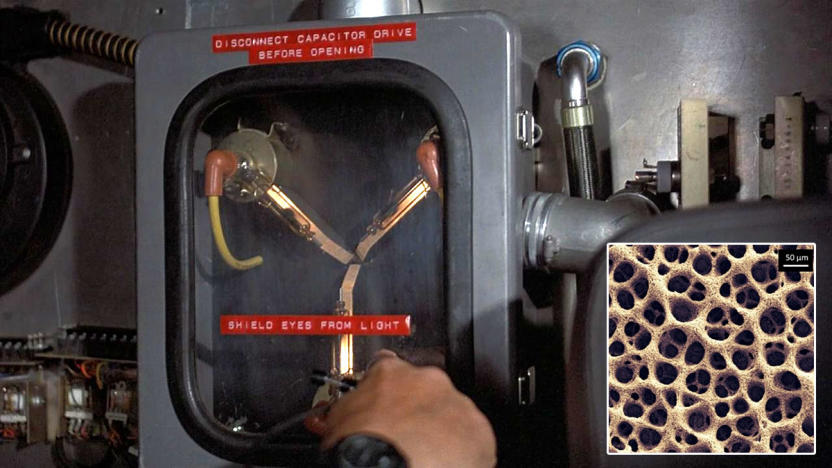CNRS
Latest

Tiny 'supercapacitors' could make batteries live longer
Scientists in Canada and France have created a micro-supercapacitor with the same energy density of a modern lithium-ion battery that could potentially last forever. Supercapacitors have long been eyed by scientists and industry leaders like Elon Musk as a replacement for batteries, since they can be recharged nearly infinitely without a loss of capacity. The research does have a "small" catch, though. The capacitor's porous cathode is just a few square millimeters in size, because it's built out of exotic materials like gold and ruthenium oxyde. If it can be scaled up, however, it may lead to capacitors with the same energy density as existing batteries, much lower charging times and longer lifespans.

Nano-machines built to mimic human muscle could help power cyborgs, keep the OSI budget down
At today's prices, building a Six Million Dollar Man would cost around $31 million. Of course, being a TV show means the Office of Scientific Intelligence doesn't have too many bionic employees, but that might not the case in the future. Nicolas Giuseppone and a team at the Université de Strasbourg and CNRS have created thousands of nano-machines to replicate the movement of human muscle fibers. Weaving them all together, the machines are able to make a coordinated contraction movement that stretches and contracts. For the moment, the supramolecular polymers can only stretch a matter of micrometers, but in the future they could be used to create artificial muscles, small robots or even materials that can move. Hopefully it'll also give us the power to leap tall buildings, so we'll be outside practicing our sound effects.

CNRS learns to control nanoscale strain in CPUs, heads to Jedi training
We've always heard that Chewbacca and friends had the power to control nanoscale strain in processors in a galaxy far, far away, but we Earthlings are just now getting caught up. Researchers at the Centre d'élaboration de matériaux et d'études structurales (CEMES-CNRS) have reportedly patented a measurement device that will essentially "enable manufacturers to improve microprocessor production methods and optimize future computers." We'll warn you, the meat of this stuff is pretty technical, but the take home is this: the technique has a good chance at "optimizing strain modeling in transistors and enhancing their electrical efficiency," which is just what we need for more potent chips that demand less energy. And that's something even a layman can appreciate.


